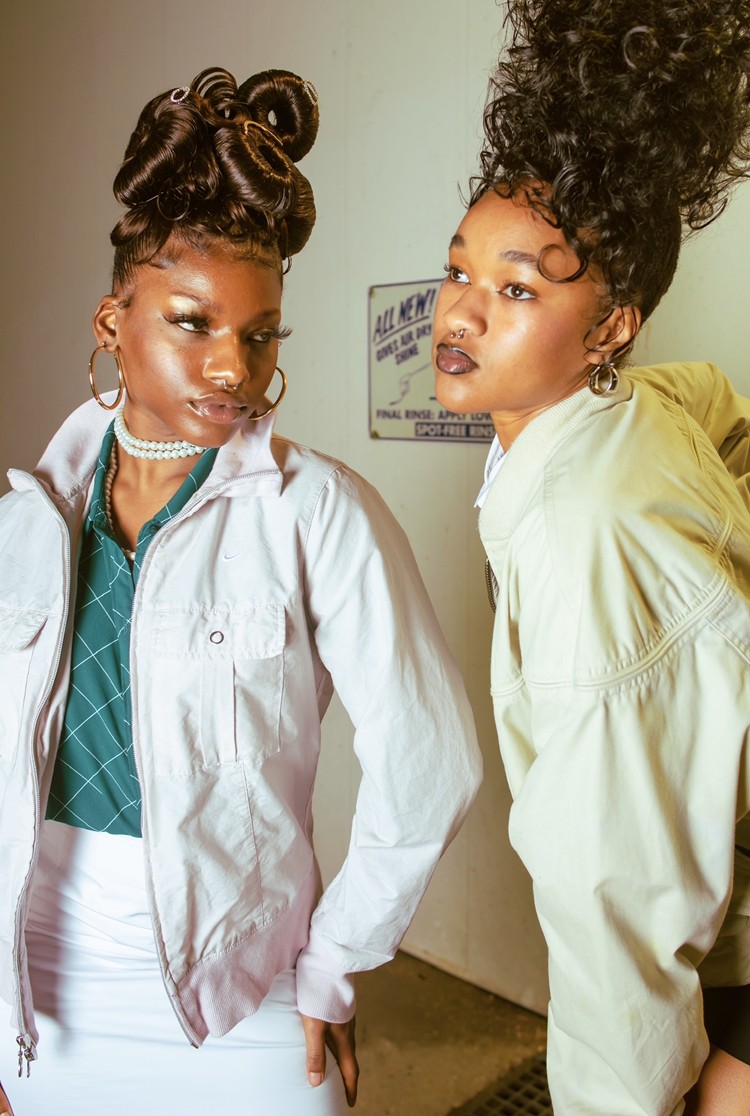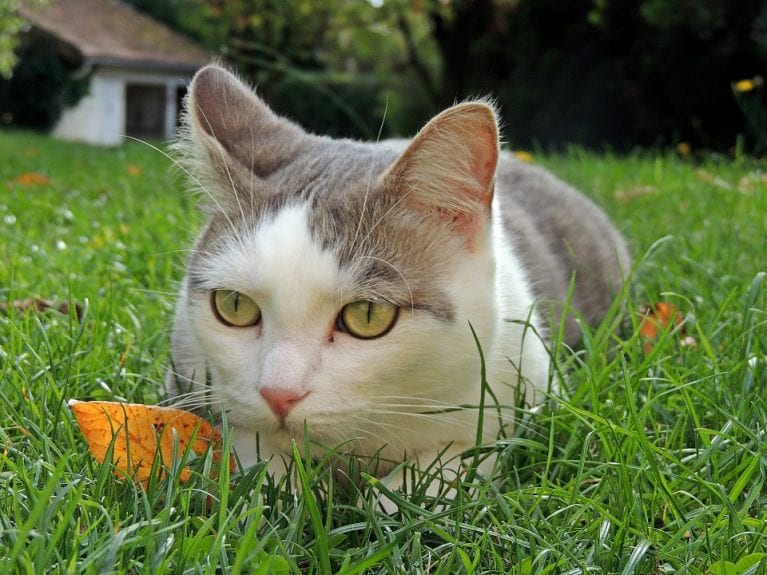Español abajo
Take portraits of your loved ones!
Download Activity
Trenity Thomas, All New, 2020, Archival pigment print, 36 x 24 inches, Collection of the artist, Courtesy of Jonathan Ferrara Gallery
Trenity Thomas is a self-taught photographer who has also experimented with painting and sketching since grade school. As a photographer, he has worked in a myriad of genres including fashion, lifestyle, editorial, conceptual, sports, portraiture, and nightlife photography.
As a photographer, Trenity uses his camera to capture the life and composition of still life around him. His photographs have a warmth to them that pulls the viewer into the scene as if they were present – a feature that has become characteristic of his photographic style.
Instructions
Step 1: Look up portraits on the internet and in books. What is interesting about them? Be attentive to the person’s facial expressions, how do you think they are feeling? Look at the background. Is it blank and neutral or is it busy, is there a lot of action and objects?
Step 2: Think about who you want to create a portrait of. It can be a parent or guardian, a friend, a pet… If you’re photographing a person, remember to ask their permission first. You can also do a self-portrait. Why do you want to photograph that particular person or animal? Reflect on your connection to them. Why is this person or pet special to you? How will you depict this special relationship in your portrait?
Step 3: Now that you have chosen your subject, pick a place where the photograph will be taken. Remember the location of where you take the photo will determine the background of your portrait. Ask your subject to pose for their portrait! You can ask the person nicely to move according to how you want the composition of your image.
If you don’t have access to a camera or a camera phone to take pictures, use your hands and your imagination. Make a frame for your photograph by extending your thumbs and index finger. Touch the tips of your index fingers to your thumbs to make a box. Close one eye and focus on your subject in the frame. Think about the composition. What is in the background of the portrait?
Step 4: Now that your subject is in the right place, think about how big you want the person to be in your photograph. If you want their face to take up the whole frame, get close to them. For them to be smaller surrounded by other things, you can step a few steps back. When you are ready, photograph your subject multiple times to get the best shot possible. Say cheese! After the session is over, pick your favorite photograph.
Step 5 (optional): If you’re using a digital device like a camera phone to take pictures you can edit the photograph. You can reframe the photograph or change the colors to give it a different effect. Have fun trying different styles!
Vocabulary
Self-taught: A term for artists that have not received formal artistic training, has not been part of an artistic community, and has worked alone and learned their skills on their own.
Portrait: A portrait is an artistic representation of a person, in which the face and its expression is central.
Background: The part of the composition in the pictorial arts that appears to be farthest from the viewer.
Self-portrait: A portrait of an artist produced or created by that artist.
Composition: The arrangement of elements within a work of art and how they relate to each other.
SEE TRENITY THOMAS’ PHOTOGRAPHY IN LOUISIANA CONTEMPORARY 2021 PRESENTED BY THE HELIS FOUNDATION, ON VIEW AT OGDEN MUSEUM.
SEE MORE FUN AT-HOME ACTIVITIES FOR KIDS ON THE O BLOG!
QUESTIONS? EMAIL EDUCATION@OGDENMUSEUM.ORG

Example of a cat portrait by Louise Ledour
____________________________________________________________________
Lunes de movimiento: Retratos fotográficos
¡Toma fotografías de tus seres queridos!

Trenity Thomas, All New, 2020, Archival pigment print, 36 x 24 inches, Collection of the artist, Courtesy of Jonathan Ferrara Gallery
Trenity Thomas es un fotógrafo autodidacta que también ha experimentado con la pintura y el dibujo desde la escuela primaria. Como fotógrafo, ha trabajado en una gran variedad de géneros que incluyen moda, estilo de vida, editorial, conceptual, deportes, retratos y fotografía de la vida nocturna.
Como fotógrafo, Trenity utiliza su cámara para capturar la vida y la composición de la naturaleza muerta que lo rodea. Sus fotografías tienen una calidez que atrae al espectador a la escena como si estuviera presente: una característica distintiva de su estilo fotográfico.
Instrucciones
Paso 1: Busca retratos en el Internet y en libros. ¿Qué tienen de interesante? Estate atento a las expresiones faciales de la persona, ¿Cómo crees que se siente? Mira el fondo. ¿Está en blanco y neutral o está cargado, con mucha acción y objetos?
Paso 2: Piensa a quién quieres retratar. Puede ser un padre o tutor, un amigo o una mascota. Si decides fotografiar a una persona, recuerda pedirle permiso primero. También puedes hacer un autorretrato. ¿Por qué quieres fotografiar a esa persona o animal en particular? Reflexiona sobre tu conexión con ellos. ¿Por qué esta persona o mascota es especial para ti? ¿Cómo representarás esta relación especial en tu retrato?
Paso 3: Una vez que hayas elegido el tema, elige el lugar donde tomarás la fotografía. Recuerda que la ubicación en donde tomes la foto determinará el fondo de tu retrato. ¡Pídele a tu sujeto que pose para su retrato! Puedes pedirle amablemente a la persona que se mueva de acuerdo a cómo quieras la composición de tu imagen.
Si no puedes acceder a una cámara o un teléfono con cámara para tomar fotografías, utiliza tus manos y tu imaginación. Haz un marco para tu fotografía extendiendo los pulgares y el índice. Toca los pulgares con la punta de los dedos índices para hacer una caja. Cierra un ojo y enfoca al sujeto en el encuadre. Piensa en la composición. ¿Qué hay en el fondo del retrato?
Paso 4: Ahora que el sujeto está en el lugar correcto, piensa qué tan grande quieres que sea la persona en tu fotografía. Si quieres que su cara ocupe todo el encuadre, acércate a ellos. Para que sean más pequeños rodeados de otras cosas, puedes retroceder unos pasos. Cuando estés listo, fotografía al sujeto varias veces para obtener la mejor toma posible. ¡Pídele que sonría! Una vez finalizada la sesión, elige tu fotografía favorita.
Paso 5 (opcional): Si estás utilizando un dispositivo digital como un teléfono con cámara para tomar fotografías, puedes editar la fotografía. Puedes volver a enmarcar la fotografía o cambiar los colores para darle un efecto diferente. ¡Diviértete probando diferentes estilos!
Vocabulario
Autodidacta: término utilizado para referirse a artistas que no han recibido una educación artística formal, ni han formado parte de una comunidad artística, y que han trabajado solos y han aprendido sus habilidades por su cuenta.
Retrato: Un retrato es una representación artística de una persona, en la que el rostro y su expresión son centrales. Fondo: La parte de la composición en las artes pictóricas que parece estar más alejada del espectador.
Autorretrato: Un retrato de un artista producido o creado por ese artista.
Composición: La disposición de los elementos dentro de una obra de arte y cómo se relacionan entre sí.
Puedes ver su trabajo en el museo Ogden de Arte Sureño en la exposición Luisiana Contemporánea 2021, presentada por la Fundación Helis.
¡VE MÁS ACTIVIDADES DIVERTIDAS PARA NIÑOS PARA HACER EN CASA EN EL O BLOG!
¿PREGUNTAS? ENVÍA UN EMAIL A EDUCATION@OGDENMUSEUM.ORG.
Translation by Agostina Coll

Example of a cat portrait by Louise Ledour
